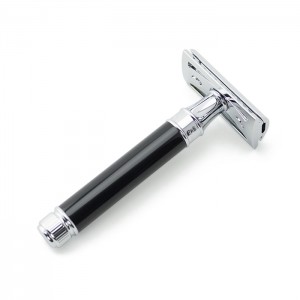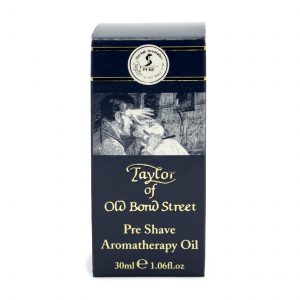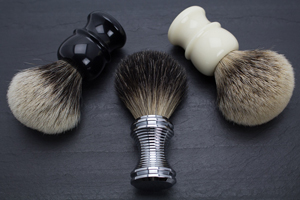How to avoid razor burn when wet shaving

Razor burn can be a real pain, not to mention a distraction for anyone having a face-to-face conversation with you after tell-tale red, angry bumps appear. Knowing how to avoid razor burn when wet shaving usually involves just taking extra care as part of your shaving regimen.
The most frequent causes of razor burn include:
- Shaving too quickly
- Using too much pressure on the razor
- Not hydrating your skin well enough before shaving
- Using dull razor blades
- Using shaving products that irritate your skin
- Making a second or third shaving pass on your skin without re-applying shaving cream
How to Avoid Razor Burn During a Wet Shave
To know how to avoid razor burn when wet shaving, simply consider which of the above causes you are guilty of committing during your shaving regimen. This “reverse engineering” to correct the root issue will help you enjoy a much better wet shave each time, without razor burn.
Once you determine your wet shaving problem areas and potential causes of razor burn, simply apply these remedies below to improve your wet shaving experience.
Shaving Too Quickly
If you are guilty of shaving as quickly as you can, making quick strokes across your face as if you are in a race with the clock, you need to slow your roll. Just add some extra time to your morning or pre-event routine to do things right, at the right speed. Your skin will thank you.
Applying Too Much Pressure on the Razor
Bearing down too hard on the razor is a common mistake for men during wet shaving. You are likely more used to using an inexpensive disposable razor, the type that require extra pressure for a close shave to be achieved. But an authentic wet shave using a safety razor, Mach-3 or Fusion razor does not require heavy pressure. Let the razor do all of the work, as you slowly glide it over your skin with light strokes. Do not drag it across your face.

Every shave should begin with a warm water wash, preferably in a shower before shaving. This warm water relaxes your skin, opens pores, softens hairs and makes the hairs stand up. All of this is very important toward preventing drag of the razor on your skin. Hydrated hairs are also easier for the razor to cut, providing for a close shave.
Even better than just a warm water wash is an exfoliation before shaving and application of a quality pre-shave oil. Pre-shave oil hydrates the skin, softens hairs and helps the razor glide smoothly over the skin’s surface.
Using Dull Blades
You should change your razor blades approximately every week to ten days, depending upon how often you shave. Whether you shave your entire face or just clean up edges around a beard also determines duration of your razor blades’ quality. It is important to use sharp, clean blades.
Using Shaving Products that Irritate Your Skin
Quality shaving creams, gels and soaps are the key to a better, closer wet shaving experience without skin irritation. Edwin Jagger, Taylor of Old Bond Street, BAUM.BE, Colonel Ichabod Conk and other quality brands are made from ingredients that improve the quality of your skin, rather than causing irritation.
Making Additional Passes with Your Razor Without Fresh Shaving Cream
Anytime your razor is applied to your skin, the skin should be protected using a quality shaving cream or soap. Do not rely on residue from a first pass of the razor to protect your skin on additional passes. By using a shaving brush, re-applying shaving cream is quick and easy during your wet shave.
To ensure your wet shaving experience is razor burn and irritation free, ensure your shaving kit or medicine cabinet is well stocked with fresh razor blades, shaving cream, pre-shave oil and other products from the OriginalShaveCompany.com.

